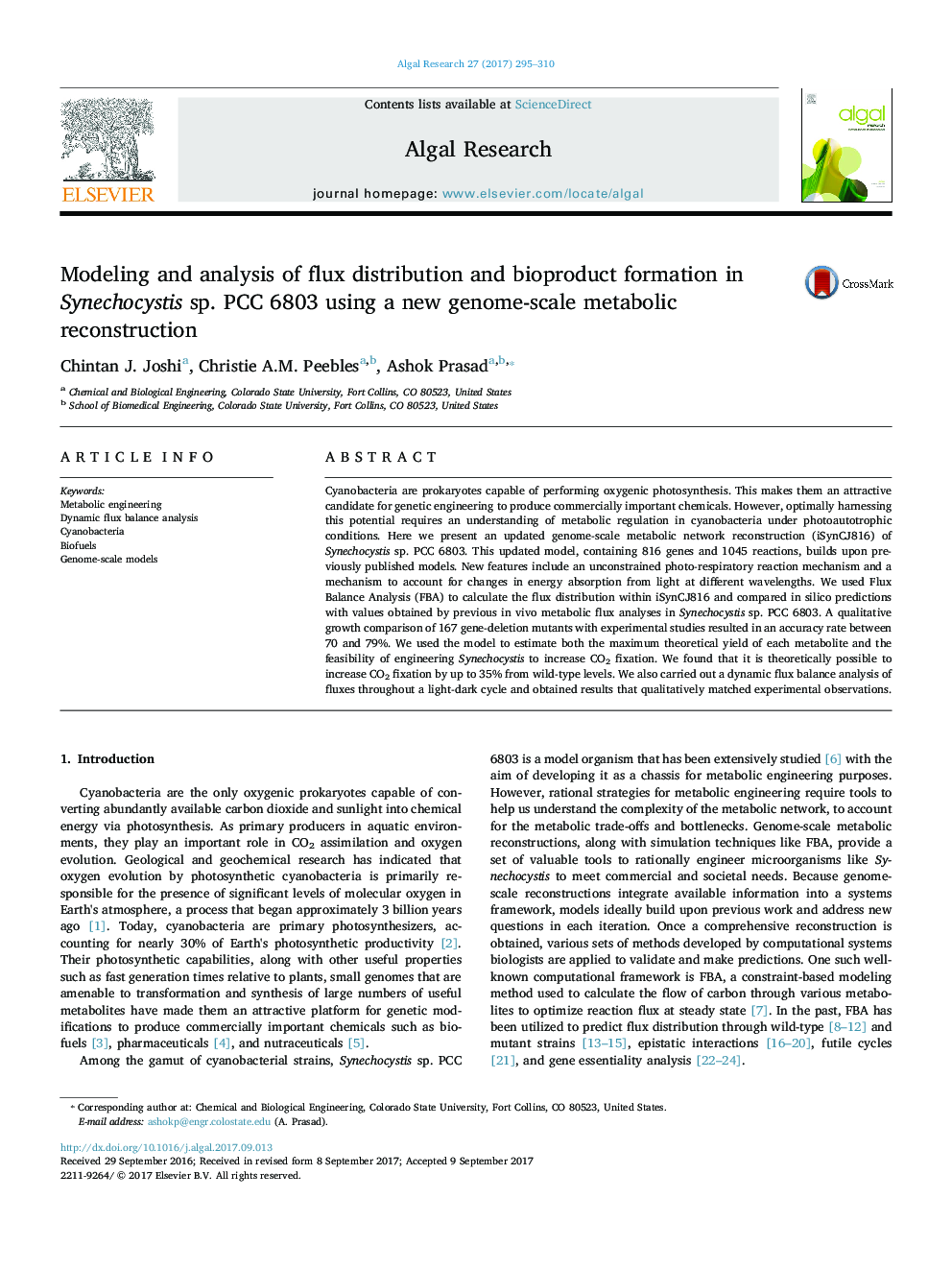| Article ID | Journal | Published Year | Pages | File Type |
|---|---|---|---|---|
| 5478532 | Algal Research | 2017 | 16 Pages |
Abstract
Cyanobacteria are prokaryotes capable of performing oxygenic photosynthesis. This makes them an attractive candidate for genetic engineering to produce commercially important chemicals. However, optimally harnessing this potential requires an understanding of metabolic regulation in cyanobacteria under photoautotrophic conditions. Here we present an updated genome-scale metabolic network reconstruction (iSynCJ816) of Synechocystis sp. PCC 6803. This updated model, containing 816 genes and 1045 reactions, builds upon previously published models. New features include an unconstrained photo-respiratory reaction mechanism and a mechanism to account for changes in energy absorption from light at different wavelengths. We used Flux Balance Analysis (FBA) to calculate the flux distribution within iSynCJ816 and compared in silico predictions with values obtained by previous in vivo metabolic flux analyses in Synechocystis sp. PCC 6803. A qualitative growth comparison of 167 gene-deletion mutants with experimental studies resulted in an accuracy rate between 70 and 79%. We used the model to estimate both the maximum theoretical yield of each metabolite and the feasibility of engineering Synechocystis to increase CO2 fixation. We found that it is theoretically possible to increase CO2 fixation by up to 35% from wild-type levels. We also carried out a dynamic flux balance analysis of fluxes throughout a light-dark cycle and obtained results that qualitatively matched experimental observations.
Related Topics
Physical Sciences and Engineering
Energy
Renewable Energy, Sustainability and the Environment
Authors
Chintan J. Joshi, Christie A.M. Peebles, Ashok Prasad,
